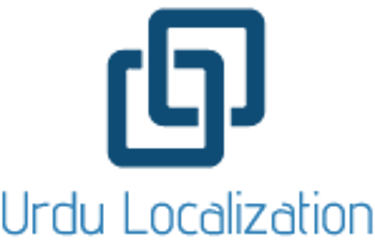
Urdu E-Learning Localization: Smart Strategies for Better Engagement
2 min read

As online education continues to expand globally, e-learning platforms must prioritize linguistic and cultural accessibility. For Urdu-speaking learners, content presented in their native language is not just convenient—it’s essential for comprehension, retention, and engagement. Human Urdu translation and localization services ensure that courses, tutorials, and training materials are fully adapted to the cultural and educational expectations of millions of learners across Pakistan, India, and the global Urdu-speaking diaspora. By localizing both language and user experience, educational platforms can unlock deeper understanding and a more inclusive learning environment.
Why E-Learning Needs Urdu Localization
Simply translating text from English to Urdu is not enough. E-learning materials often include complex concepts, specialized terminology, and interactive elements that require careful adaptation. Urdu, with its right-to-left script, double meanings, and nuanced expressions, demands precision. Professional Urdu translators and localizers go beyond word-for-word conversion, ensuring that quizzes, explanations, and instructions retain their intended meaning. This is particularly important for subjects like science, technology, and finance, where misinterpretation could hinder learning outcomes.
Enhancing Engagement Through Cultural Relevance
Learners respond best when educational content reflects their cultural context. Urdu localization services adapt idioms, examples, scenarios, and visuals to resonate with local audiences. For instance, a case study in a business course might reference markets familiar to Urdu speakers, or a history lesson might highlight regional perspectives. By aligning content with the learner’s environment and experience, platforms build trust and motivation. Human Urdu translators ensure that humor, tone, and emotional cues are conveyed naturally—something machine translation cannot reliably achieve.
Adapting Visuals, UX, and Navigation for Urdu Learners
Localization in e-learning is not limited to text. User interfaces, menus, buttons, and interactive features must be optimized for Urdu script. Right-to-left alignment, font readability, and layout adjustments are crucial to prevent confusion and maintain smooth navigation. Additionally, culturally appropriate graphics, icons, and imagery enhance the learning experience. Professional Urdu localizers collaborate with instructional designers and developers to create a cohesive, user-friendly platform that feels native to the learner.
Human Expertise vs Machine Translation in Education
While AI tools and machine translation offer speed and cost-efficiency, they often fail to capture context, tone, or cultural nuances. In educational content, these shortcomings can result in miscommunication, reduced engagement, and frustrated learners. Post-editing AI-generated Urdu translations by skilled human translators ensures accuracy and appropriateness. Human oversight is especially critical for assessments, instructions, and content involving sensitive or technical terminology. Platforms that invest in professional Urdu translation services gain credibility and provide a seamless experience that machines alone cannot deliver.
Measuring Success: Analytics for Urdu E-Learning
Effective Urdu localization is measurable. Engagement metrics such as course completion rates, quiz performance, and learner feedback provide insights into the effectiveness of localized content. By continuously analyzing these metrics, platforms can refine translations, adjust instructional design, and optimize learning pathways. Collaborating with professional Urdu translators and editors ensures that changes maintain linguistic accuracy and cultural relevance, supporting sustained learner satisfaction and improved outcomes.
High-quality Urdu e-learning localization transforms access to knowledge for millions of learners worldwide. By combining expert translation, culturally relevant adaptation, and thoughtful instructional design, educational platforms foster engagement, comprehension, and long-term retention. Investing in professional Urdu localization services is not just a strategy—it’s a commitment to inclusivity, quality, and learner empowerment in an increasingly global digital classroom.
